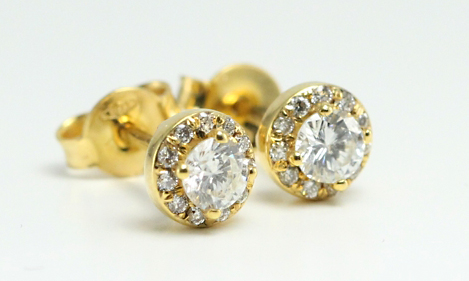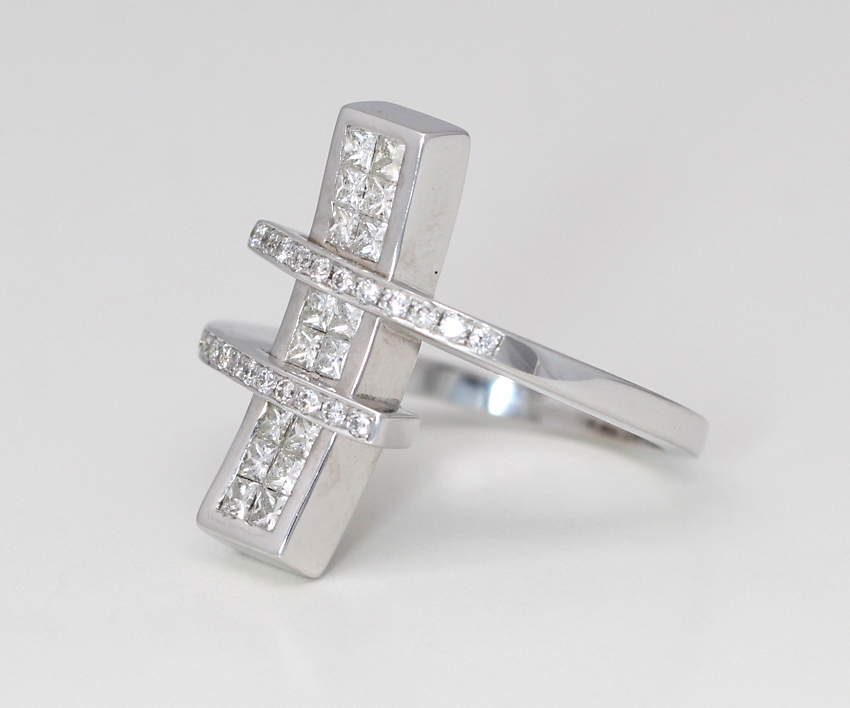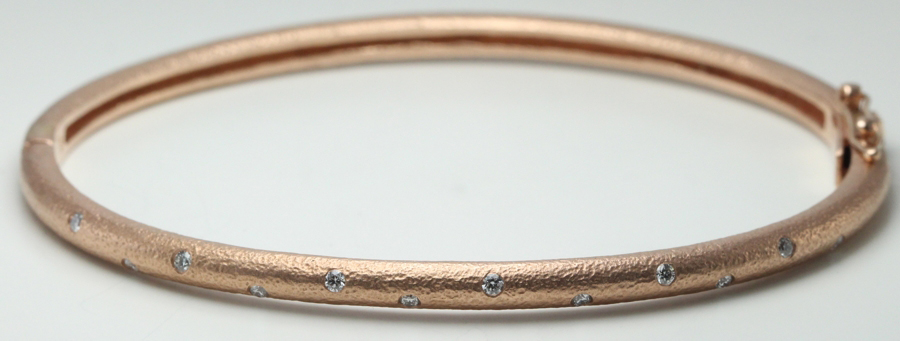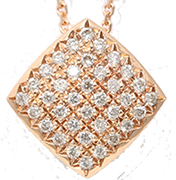What Makes Gold, Gold?
When looking at gold there are 2 main components, there is the color that is made by mixing different alloys with the gold (as explained below) and the gold karat (or Kt.) that is the percentage of gold that is actually in the gold.
Gold Color
The color of gold is determined by two factors:
- The type of metal alloys included in the gold mixture
- The percentage of each metal alloy in the gold mixture
Yellow Gold
Natural gold and color-saturated alloys are what give yellow gold jewelry such a rich shine. The alloys most commonly used are, copper with a red hue, and silver featuring a green hue. An exact mixture of copper or silver with the pure gold gives this precious metal its warmth.

14k Yellow Gold Round Diamond Earrings (0.45 Ct, G, SI1)
White Gold
A silvery white character is what makes white gold jewelry so appealing. In order to make the gold white, it is combined with metal alloys that are white in nature and plated with an extremely hard element called rhodium. Although strong, rhodium may wear away over time. Re-plating is a simple process that can be done to restore its whiteness.

18k White Gold Princess & Round Diamond Invisible Set Ring (0.35 ct, G, VS1)
Rose Gold
The beautiful pink hue of rose gold jewelry is created by using a copper alloy. Again, the overall percentages of metal alloys is the same for rose gold as it is for yellow or white, there is just a different mixture in what alloys are used.

14k Rose Gold Bezel Set Hammered Diamond Bracelet (0.18ct, H, SI2-SI3)
Rose gold makes
everyone look good

Two Tone Gold
At CaratsDirect2U we offer diamond solitaire rings that are mounted in combinations of both yellow and white gold as well as white and rose gold. These rings are both unique and trendy so be sure to check our collection of 14k two tone gold solitaire diamond rings.
The chart below gives you a full breakdown of gold karat types:
| Karat |
% of Gold
|
Used in Jewelry
|
|---|---|---|
| 24 |
100% |
Too soft
|
| 22 | 91.7% | Too soft |
| 18 | 75% | Ideal |
| 14 | 58.3% | Ideal |
| 10 | 41.7% |
Not acceptable
|
Caring For Your Gold Jewelry
- Since gold is a natural element, it is affected by harsh chemicals such as chlorine or other cleaning products. We recommend that you remove your jewelry when using chemicals to reduce daily abrasions and prolong the shine. It is also highly recommended to remove all jewelry pieces before any type of strenuous activity.
-
Gold
can lose its shine over time if
repeatedly exposed to dust, moisture, perspiration and makeup. So make sure to
clean your jewelry regularly. You can use a cleaning solution of sudsy, lukewarm
water, or bring it to your local jeweler and have it professionally
steam-cleaned.
After cleaning and rinsing, always dry and polish jewelry with a chamois or soft cloth to avoid scratches and bring out its shine. When not worn, store your gold pieces in soft cloth bags or the original box to protect them from the elements of daily exposure. -
Second,
beware of chemicals. Gold's worst enemy is chlorine repeated exposure to
chlorine can weaken gold's structure, eventually leading to breakage. So keep
your gold jewelry away from chlorinated cleaning products and out of swimming
pools and Jacuzzis.
Additionally, acids, abrasives and other harsh chemicals found in some common household cleaning solutions can weaken your jewelry or damage its finish. So it's best to cover up rings and bracelets with rubber gloves while doing heavy-duty cleaning. Or better yet, take them off altogether. - Proper storage is as important as cleaning. Protect your gold jewelry by storing it safely in a jewelry box or keeping it wrapped in a soft cloth when not being worn. Furthermore, keeping pieces stored separately will prevent them from getting tangled or scratching one another.
Finally, always inspect your gold jewelry for weakness or damage and bring it to a professional jeweler you trust for immediate repair if needed. Pay particular attention to clasps to ensure they catch easily but are still secure and prongs (to ensure they haven't cracked, bent or loosened, which could cause the stone to fall out). Check the chain links on your bracelets and necklaces to ensure they don't kink or bend also check the pin backs and earring posts on your earrings to see if they are bent or loose.
Be aware that wedding bands, pendants and charms are subject to wear and can thin out and eventually break. Your jeweler will be able to handle these and many other repair jobs and ultimately restore your gold jewelry for you.



